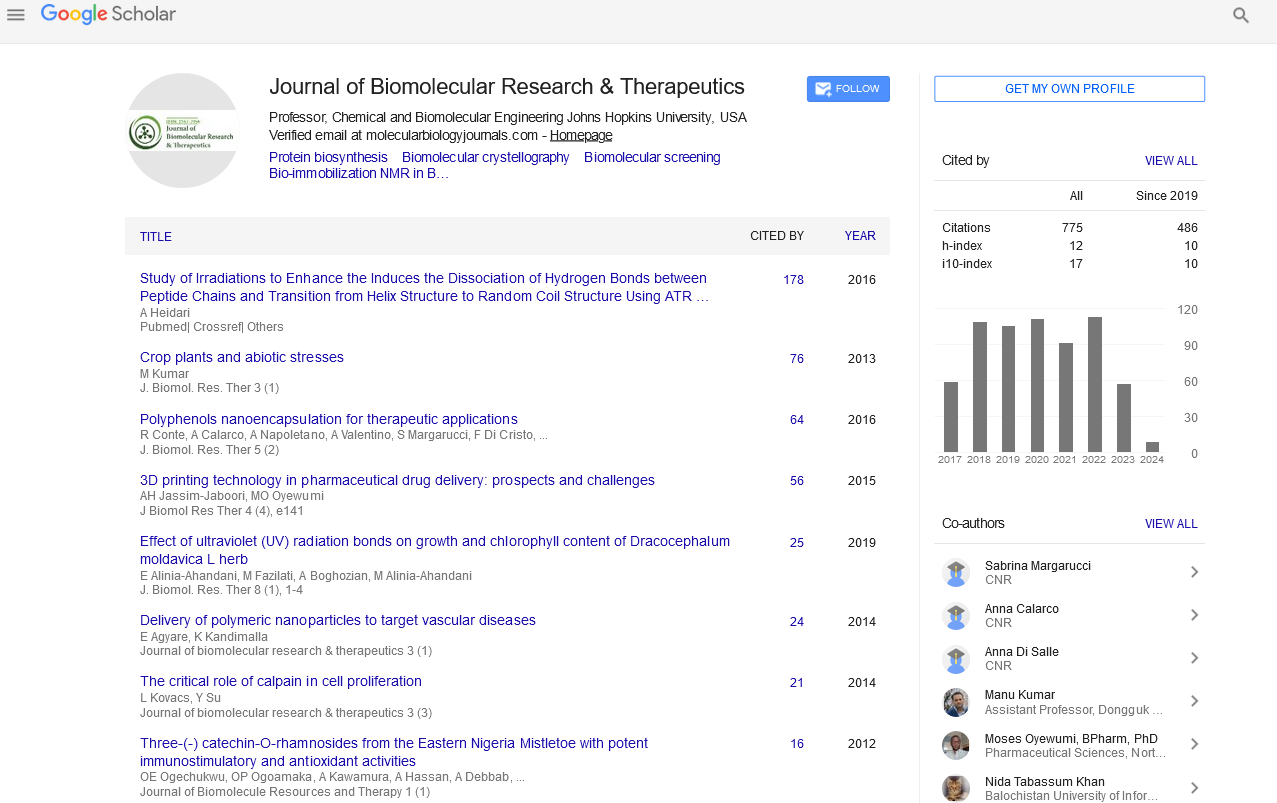PMC/PubMed Indexed Articles
Indexed In
- Open J Gate
- Genamics JournalSeek
- ResearchBible
- Electronic Journals Library
- RefSeek
- Hamdard University
- EBSCO A-Z
- OCLC- WorldCat
- SWB online catalog
- Virtual Library of Biology (vifabio)
- Publons
- Euro Pub
- Google Scholar
Useful Links
Share This Page
Journal Flyer

Open Access Journals
- Agri and Aquaculture
- Biochemistry
- Bioinformatics & Systems Biology
- Business & Management
- Chemistry
- Clinical Sciences
- Engineering
- Food & Nutrition
- General Science
- Genetics & Molecular Biology
- Immunology & Microbiology
- Medical Sciences
- Neuroscience & Psychology
- Nursing & Health Care
- Pharmaceutical Sciences
Abstract
The Simultaneous Human FVIII/vWF Purification and Virus Inactivation Combined in Chromatographic Column
Sergiy P Havryliuk, Ievgenia M Krasnobryzha, Olena S Havryliuk and Georgii L Volkov
Well known that the decrease of the number of degrees of freedom prevents protein?s denaturation. In the previous investigation, we showed that the chromatographic gel binding protein can serves as an agent reducing the number of degrees of freedom of the protein. In addition, the high dynamic capacity of new developed gels provided a satisfactory retention of the peptide/protein at elevated temperature of the chromatographic process. These both factors allowed the implement of the virus inactivation for the peptide (streptokinase fragment SK1-61) and low (milk lysozyme) and an average (Fibrinogenolytic enzyme from the snake venom) molecular weight protein directly in the column during targets isolation. The goal of this study was an investigation of the possibility to save the activity of the high molecular weight complex FVIII/vWF, bound by ion exchange and affinity gels during the virus inactivation directly in the chromatographic column. Another goal was to show that the binding protein adsorbent can serves as reliable ?sieve? for mechanical washing away of infecting viruses. Using various chromatographic, photometric, RT-PCR approaches it was discovered that the high dynamic capacity, which determines the high temperature-depending capacity of the adsorbent, allowed to perform the virus-inactivating complex FVIII/vWF by solvent/detergent treatment directly in the chromatographic column at the temperature 40-50�C during a long time 3-5 hrs. The FVIII biological activity was completely preserved; enveloped and non-enveloped viruses were effectively removed. The level of modeling virus elimination was sufficient for a full inactivation of viruses that allowed us to recommend this method to use in pharmaceutical industry.


